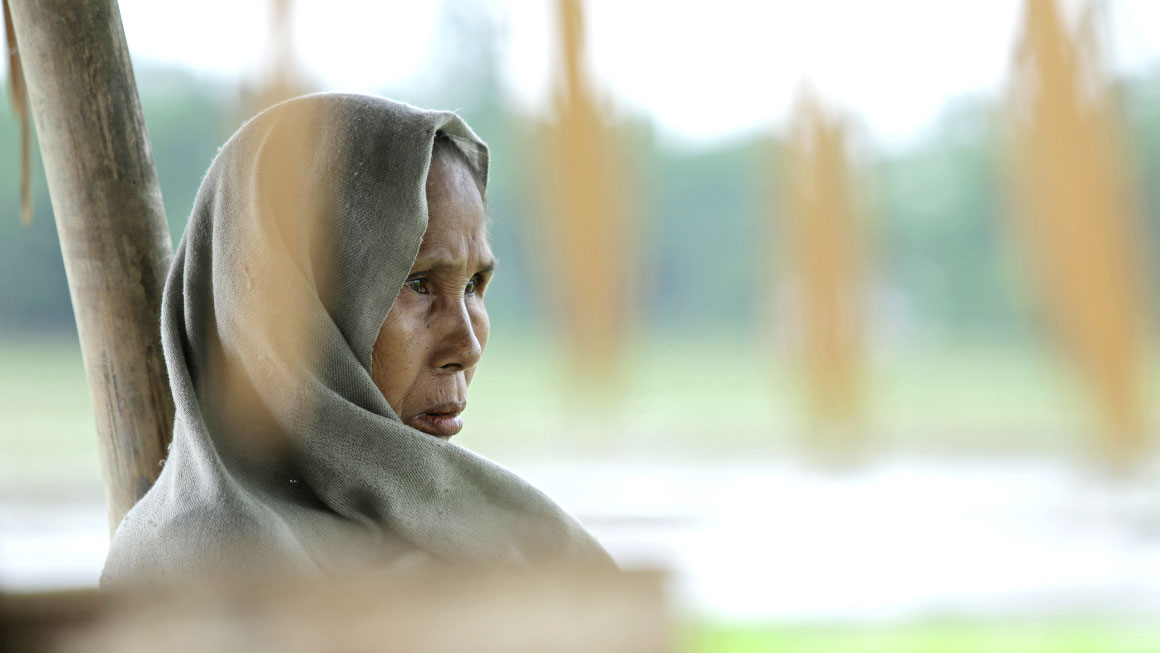When Villagers--And a Daily Wage Labourer-- Brought a National Award
GUWAHATI: A movie in which a group of villagers were the actors, including a daily wage labourer. Haanduk (Hidden Corner), based on the trauma and torture faced by the villagers during the peak years of insurgency in Assam, has won the Rajat Kamal Award for the best movie in the Moran language in New Delhi.
After hearing the good news from the director Jaicheng Jai Dohutia over the phone from Guwahati, a clueless Bandoi Chetia,60, the protagonist, said she was happy if the boys have done something good.
“I don’t understand what this is all about. What I believe is that these boys (film unit) are hard working and if they have done something good, I’m very happy. My blessings will always be with them,” said Chetia.
Chetia, a daily wage labourer, lives in Tongona Maaj gaon in Tinsukia district.
The director said that he wanted his film to be original and close to the ground. “So, I was looking for some fresh faces and also raw faces and talent. I spotted Chetia when we went searching for locations. She helped me to a great extend in portraying the raw emotions of a harsh reality,” Dohutia told The Citizen.
The 90-minute film made in Assamese and Moran languages, depicts the tale of a family that lost a member who had gone to join an insurgent group. It was mainly shot in Tongana Maaj Gaon, Tinsukia, Digboi, Margerita, Ledu and in some places in Arunachal Pradesh.
The director said that after spotting Chetia, the lead actor of the film, he took an audition with his mobile camera. “And that’s the beginning. Following this, they were provided some training for a week. We have around five main characters and all of these are acting in front of the camera for the first time. As a director it was a different experience for me to work with such a team,” Dohutia added.
The director and the unit was all praise for the leading lady. “I was more than happy to see her skills… I believe that she has faced so much of trouble in her life that acting of pain came quite naturally to her. More than 80 percent scenes she has done at one go. I was happy to see her living up to my expectations in acting and also felt very bad about her plight,” said Dohutia.
The film was shot amidst people who had witnessed the growth of militancy and its effects. It was loosely based on a true event which took place in 2007 involving a woman and her dead son.
Commenting on ‘Haanduk’, Maulee Senapati, a film academician who is an alumni of the Film and Television Institute, Pune, said that the film portrays not simply the pain of the people who had suffered at the hands of both the sides, the state and those contesting the state; it delves into the silence of souls maimed for a lifetime by killings within an environment where death literally stepped through the doorways of homesteads to physically and metaphorically annihilate a sense of freedom, sparing none, from infants to the aged.
“If one has to look back at films made in Assam in a span of a decade or so, I cannot think of another feature film better than ‘Haanduk’ when it comes to honesty of purpose with which the film was made. The film’s images are true to life, sprouting out of the soil, a narrative which hasn’t been woven by isolated visuals shot technically well, forced onto a narrative because of their visual appeal even when they lack narrative coherence. Cinema is never made that way is precisely what the experienced filmmakers would always suggest,” said Senapati.





